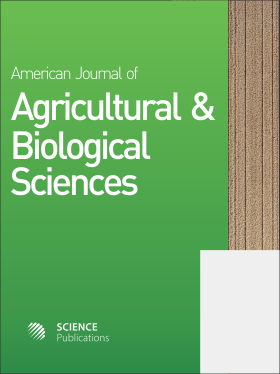Response of Cowpea (Vigna unguiculata L. Walp.) Varieties to Striga gesnerioides (Willd.) Vatke Infestation
- 1 Department of Sustainable Agriculture, Faculty of Agriculture and Natural Resources, Tamale Technical University, Tamale, Ghana
- 2 Department of Agricultural Engineering, Faculty of Engineering, Tamale Technical University, Tamale, Ghana
Abstract
Production of cowpea within the sub-Saharan Africa, and Ghana in particular, is bedeviled with many challenges, including Striga infestation, resulting in abysmal low grain and biomass yields. Thus, the study was conducted to evaluate Striga's impact on cowpea growth and yield. During the 2023 agricultural season, the study was carried out in Northern Ghana. A control (non-infested) experiment and a Striga-infested experiment were carried out concurrently. Each of the two trials had three replications and was set up using a randomized complete block design. The Gen Stat statistics software edition 12 was used to conduct statistical analyses, such as correlation analysis and Analysis of Variance (ANOVA), and means were separated using Least Significant Differences (LSD) at a 5% probability. The findings showed that cowpea cultivars and Striga infestation interacted significantly (P<0.05). The results also showed that there was a significant (P<0.05) difference among the three varieties in terms of growth parameters like plant height, number of leaves, leaf area, and number of branches; under Striga-infested conditions, Padi-tuya produced the tallest plants, the most leaves and branches, and the broadest leaves. Striga infestation also had a significant (P<0.05) impact on the yield and yield components, including grain yield, 100-seed weight, number of pods per plant, number of seeds per pod, and dry biomass production. Of the three cowpea varieties, Padi-tuya produced significantly higher grain yield components. Ultimately, when Striga was present, Padi-tuya yielded significantly (P<0.05) more plant height, leaf area, branches, dry biomass production, pods per plant, seeds per pod, 100-seeds weight, and total grain yield than the other two cultivars. It is therefore recommended that in Striga gesnerioides - infested agricultural lands, Padi-tuya should be cultivated for increased biomass and grain yield production.
DOI: https://doi.org/10.3844/ajabssp.2025.16.25

- 93 Views
- 11 Downloads
- 0 Citations
Download
Keywords
- Varieties
- Cowpea
- Striga Infestation
- Growth Parameters
- Northern Ghana
